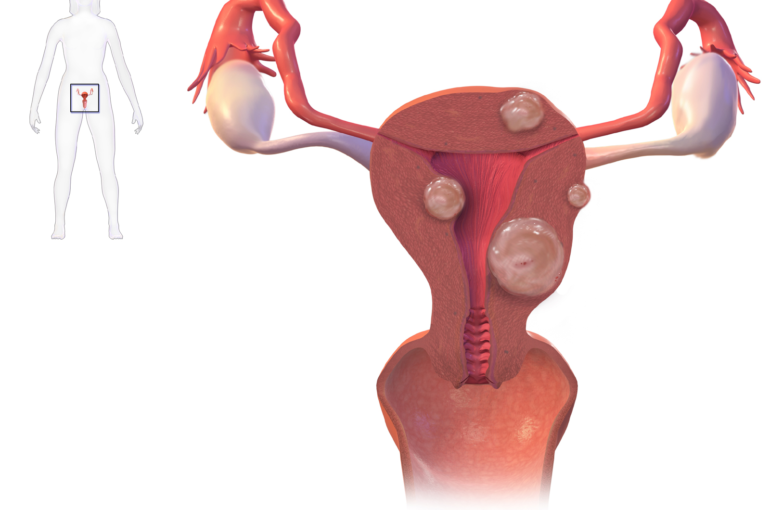10 Things Every Woman Should Know About Fibroids
10 Things Every Woman Should Know About Fibroids

Fibroid tumors are benign (non-cancerous) growths that appear on the muscular wall of the uterus. They range in size from microscopic to masses that fill the entire abdominal cavity, in some cases, as large as a five month pregnancy.
Below are 10 Things every woman should know about Fibroid:
- Uterine fibroids can affect women of all ages, but are most common in women ages 40 to 50 years.
- Depending on size, location and number of fibroids, common symptoms include: pelvic pain and pressure; excessive bleeding, including prolonged periods and passage of clots, which can lead to anemia; abdominal swelling; pressure on the bladder, leading to frequent urination; pressure on the bowel, leading to constipation and bloating; Infertility.
- Uterine fibroid tumors are estrogen dependent; they thrive on estrogen. In fact, uterine fibroid tumors never develop before the onset of menstruation when the female body begins producing estrogen. During pregnancy, fibroid tumors often grow extremely fast due to the extra estrogen produced by the body during pregnancy. Most women who have fibroid tumors and who are able to wait until after menopause discover their uterine fibroid tumors shrink and disappear once estrogen production stops in the body.
- It is extremely rare that uterine fibroid tumors are cancerous.
- Fibroids are diagnosed with an ultrasound in their gynecologist’s office. Magnetic Resonance Imaging (MRI) is also used to determine how fibroids can be treated and provide information about any underlying disease.
- Uterine fibroids can be treated through myomectomy, a surgery to remove the fibroids.
- Laparoscopic Myomectomy is a minimally invasive and safer form of myomectomy that eliminates the need for the patient to be cut wide open.
- A more recent method that has emerged for the treatment of fibroids is high intensity focused ultrasound (HIFU), which makes use of real-time ultrasound and high-intensity ultrasound waves to generate localized heat to specifically target individual fibroids to destroy the cells.
- HIFU is relatively safer than other methods of treatment for fibroids as it is non-invasive, it has a short recovery time, causes no blood loss, has low complications rates and preserves fertility.
- Always remember that the first step for diagnosis and treatment of fibroids is to consult with your gynaecologist who should suggest the best treatment for the fibroids.



